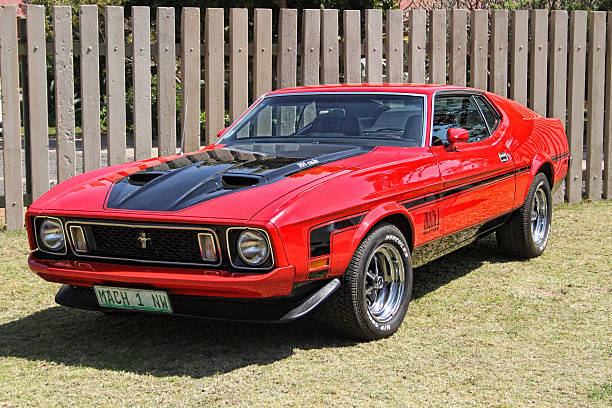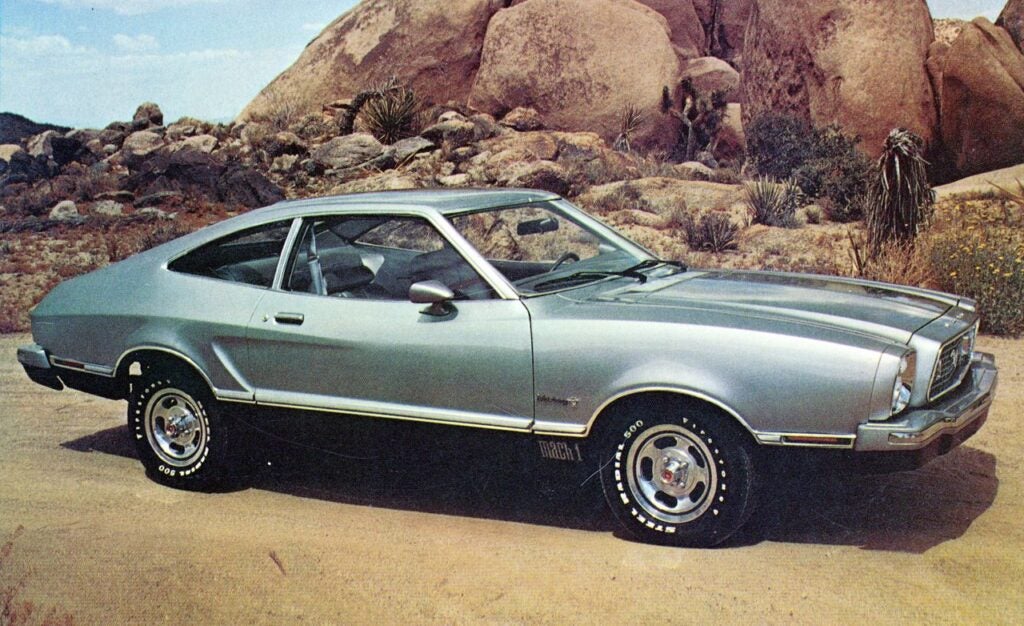Next year, the Ford Mustang will celebrate its 60th birthday, and oh what a ride it’s been!
In 1964, the nation was still reeling from the assassination of President John Kennedy, Beatlemania was in full swing and humans walking on the Moon was just a scant five years away. The year 1964 was also the year that Ford discovered an entire new marketing segment: teenagers and young adults.
Prior to that point, teenagers either borrowed the family car for date nights or saved up the money to buy a five-year-old beater.

However, Baby Boomers were beginning to come into their own, with more and more of them leaving the suburban nest to attend college. Ford wisely saw the trend and began crafting a car aimed squarely at the young adult.
According to MotorTrend, Lee Iacocca, vice president and general manager of Ford, found that while the compact Falcon fit the bill in terms of price and reliability, it was not exciting to the younger market. So, Iacocca set about reimagining the Falcon into something sporty.
One of the drawbacks of the Falcon was that it looked and performed rather pokey. It was a “grocery getter” that lacked the power to thrill one on the highway.
An interesting side note, most people think the Mustang was named after the equine, hence the term “pony car,” but it was actually named after the World War II era P-51 Mustang fighter plane.
Now, mind you, the new design was not originally meant to be a muscle car, per se; Ford engineers, in the beginning, focused on torque. That is not to say that the original engines offered were slouches by any stretch of the imagination. The 289-cu in version, with 9.0-to-one compression and a four-barrel carburetor produced 210 horsepower on a light frame giving the car plenty of oomph.
Just like EMI, the company that launched the Beatles in America, were skeptical about the group becoming an instant hit prior to the release of “Please Please Me,” Ford only projected the first year’s sales to be 100,000.
The company was pleasantly surprised to sell 22,000 units on the first day when showrooms were overrun by young adults with checkbooks in hand, according to Classic Pony Cars.
Ford also learned its lesson with the release of the 1958 Edsel, where the company overhyped the vehicle and even produced a television program, “The Edsel Show,” starring Frank Sinatra and Bing Crosby, with the new vehicle obscured under a tarp.
Instead, Ford quietly released the new model in mid-year, calling it the 1964 ½ Ford Mustang, and the cars quite literally flew off the lots.
Over the following years Ford upped the performance ante, getting Carroll Shelby involved, and later releasing the Mach I and the Boss 302 which were true road demons. By 1970, the Mustang had seemingly doubled in size and was giving traditional full-size muscle cars a run for their money.

By 1972, sales had fallen to 125,813 from the peak of 607,568 in 1966, according to C J Pony Parts.
It appeared that the Mustang was headed into the perfect storm as states were enacting strict emission controls, insurance companies were nearly doubling the rates of performance cars and the Middle East oil embargos were threatening to completely cut off the spigot of foreign oil.
These factors made the Mustang too expensive for its intended audience.
Ford could have gone the way of the other domestic automakers and simply pulled the plug, as Chrysler did with the Plymouth Barracuda; however, cool heads prevailed and the Ford engineers rolled up their sleeves, determined to return the Mustang back to its basics.
The result was the Mustang II.

At first, critics panned the new Mustang II claiming it was little more than a re-badged Pinto with zero performance attributes; but the public warmed to the new generation of the pony car because Ford had taken the marque back to its original vision as an economic, but more luxurious sub-compact.
The Mustang II did share some parts with the Pinto, but it was not a Pinto in disguise. Once reviewers had the opportunity to actually drive the car, they liked it, and the new car won MotorTrend’s 1974 Car of the Year Award.
In 1979, Ford introduced the third generation Fox body Mustang and performance once again returned to marque. The car has evolved even further with the introduction of the Mustang Mach E, although the jury is still out on the styling of the electric vehicle with most people, including myself, saying the model looks more like a crossover than a pony car.
My wife has an affinity for convertibles. Over the years, we have owned a Mazda Miata that we almost literally drove until the doors fell off, a Volvo that spent more time in the shop than on the street (the first thing to break was the convertible hardtop) and a Chevrolet Camaro that, despite its V-6 engine, was underpowered and uninspiring.
My four-door Chrysler with a four banger has more torque than the Camaro.
Recently, we bought a 2020 Mustang EcoBoost convertible, and we absolutely love it. Ford has figured out how to wrench 225 horsepower and 250 lb ft of torque out of a four-cylinder engine. We like the car so much that we named her Sally.
So, shoot me a wave if you see me tooling around with the top down.
See you on the road!
Scott Hudson is the Senior Investigative Reporter and Editorial Page Editor for The Augusta Press. Reach him at scott@theaugustapress.com











